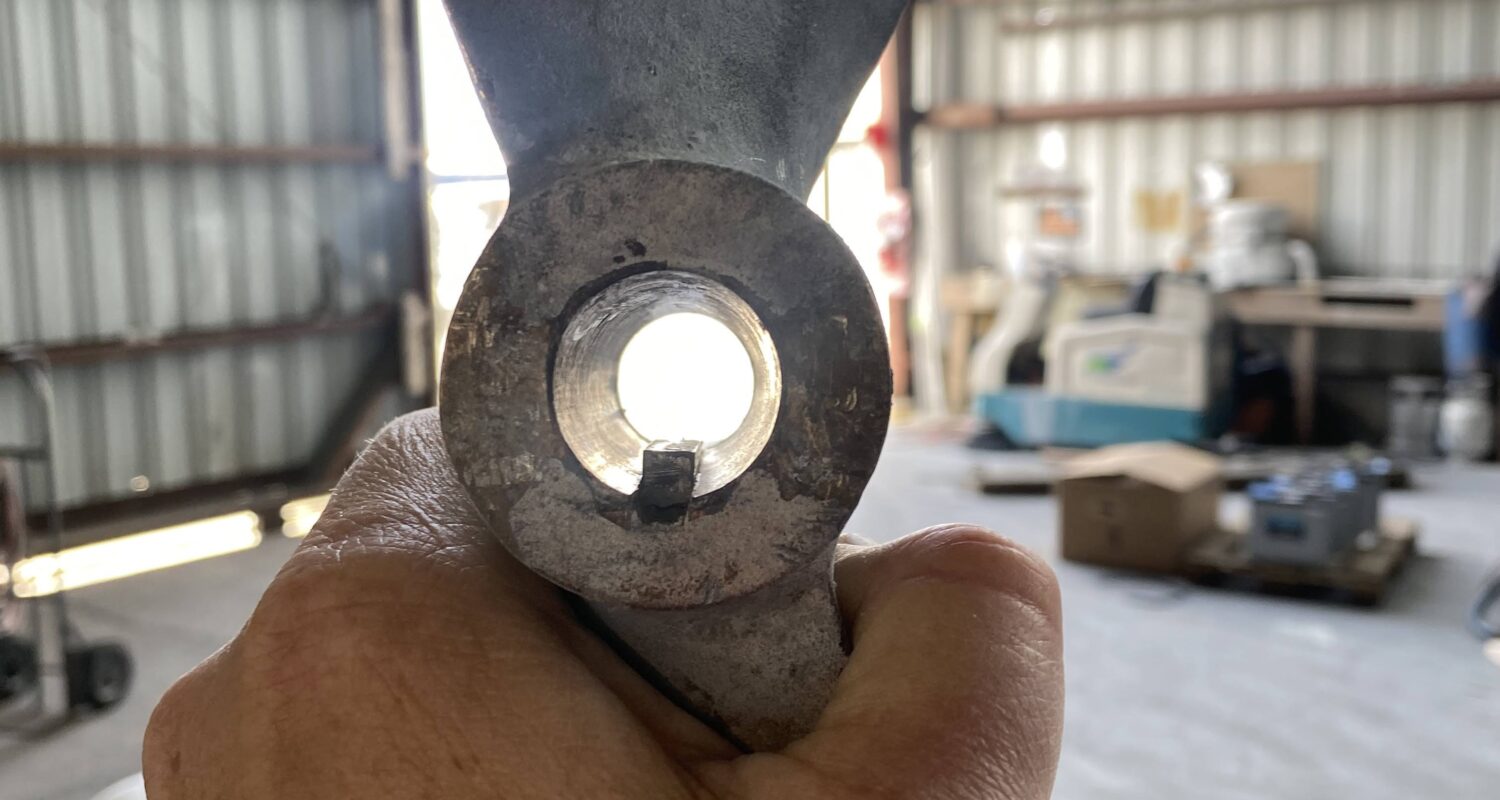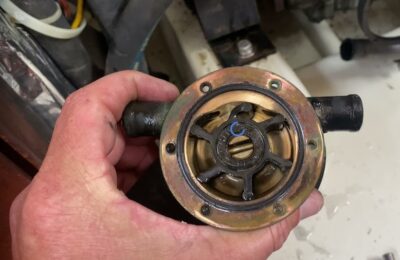A beginner’s note for myself/for future reference: A quick overview of how a propeller shaft attaches to both the engine transmission and the propeller itself. Mine is currently out of the water and disassembled and so it is easy to view.
The coupling bolts to the transmission and within the coupling is a key (male) protrusion into the cylinder.
The rusted condition of my coupling is less than excellent.
The propeller shaft keyway (female) mates with the notch in the coupling.
On the coupling two bolts function as ‘set screws’ compressing the shaft onto the key with perpendicular force.
Similarly, the propeller has a key (male) that mates with another keyway slot on the outboard side of the propeller shaft.
The propeller is held on to the end of the shaft by a pinned castle nut, instead of the set-screw format of the transmission connection. This is the same kind of nut that one would find on the hub of a small vehicle trailer. At least, that is the other application in which I have found a castle nut like this.
I would add that my boatyard instructed me to let them remove the coupling and prop shaft. According to the generally reliable Maine Sail site, it is easy to do damage to an engine transmission in the process of trying to remove a propeller shaft or especially, a transmission coupling.
My plan is to retain my traditional stuffing box when re-assembled, but I will probably have my transmission coupling replaced.



